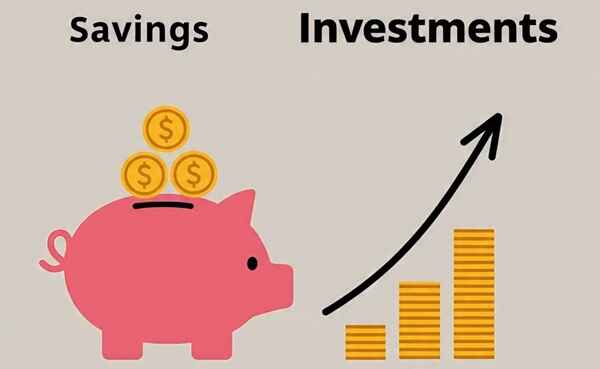Financial management is all about making good choices. They form the basis of a strategy that works with the needs of today and the goals of tomorrow. As individuals progress from one stage of life to another, it becomes important whether they understand how savings plans can fit with the best investment plan options.
Savings imply safety and liquidity, whereas investments imply greater chances of wealth creation. Which one is suitable for you? This article elaborates on the core differences and benefits of both, along with how to combine the two smartly into your portfolio, depending on your age and salary level.

Savings Plan: Security and Liquidity First
These are financial instruments that prioritise safety and liquidity. They are often used for short-term goals or emergencies. Most such plans offer fixed returns against the lowest level of risk.
Why Are Savings Plans so Important?
● Emergency Cushion: The money could be needed for medical costs, an unexpected layoff, or unforeseen expenses.
● Liquidity: This offers immediate access to cash in times of urgent need. But they are without the painful wait through market-related losses or delays.
● Financial Discipline: Instils the habit of making disciplined contributions through a recurring deposit scheme or a high-interest account.
Common Types of Saving Plans:
- Recurring Deposits (RDs): A monthly savings scheme with assured returns. But the interest earned is taxable.
- Fixed Deposits (FDs): A one-time lump sum saving placed for a given tenure at an assured rate of interest. The interest income is subject to tax.
- Post Office Savings Schemes: Known for their Government backing and returns that are revised periodically and may not always beat inflation.
Savings help especially for individuals in their early 20s or with lower income in building the discipline and resilience to further venture into the market avenue.
Investments: Breaking Wealth Creation Over Time
Investing is the act of committing money into an asset in expectation of future gains. These instruments carry varying levels of risk depending on the asset class. But when well managed, they provide more rewarding returns.
Why You Need Investments:
● To Beat Inflation: By way of returns, investments generally surpass inflation, unlike ordinary savings.
● To Create Wealth: A substantial amount can be accumulated through compounding over extended periods.
● Tax Efficiency: Many investment alternatives provide for tax-exempt or tax-efficient benefits.
Investment plan options must go age-wise and goal-wise:
1. In the 20s-30s:
- Equity mutual funds
- SIPs (Systematic Investment Plans)
- NPS (National Pension Scheme)
2. In the 40s-50s:
- Balanced funds
- PPF (Public Provident Fund)
- Real estate (if the goal is long-term ownership or rental income, and the liquidity constraints are manageable)
3. Post-Retirement:
- SCSS (Senior Citizen Savings Scheme)
- MIPs (Monthly Income Plans): These are now categorised as Conservative Hybrid Funds and do not guarantee regular monthly income
- Debt funds
The best investment plan varies with one’s risk appetite, time horizon, and financial goals. For example, someone with a stable income at 30 would prefer high-growth instruments, such as equity funds. But someone nearing retirement would prefer a steady income and capital preservation.
Building the Right Mix: Combining Savings and Investments
A perfect mix between savings and investments can set you up for the future. Here’s how to go about it efficiently:
Tips To Maintain a Balanced Portfolio:
- Follow the 50-30-20 Rule: Use half for needs (including emergency savings), 30% for wants, and 20% for investments.
- Increase Investment Ratio with Income: As income increases, the surplus can be directed toward high-return investment avenues. However, risk exposure should reduce with age.
- Quarterly Review: Your financial plan should change as your goals and stages of life change.
- Don’t Neglect Insurance: A good plan always includes some form of protection, such as life or health coverage.
Thus, savings plans, when rightly combined with the best investment plan strategies, ensure one’s financial stability today and wealth tomorrow.
Conclusion: Tailor Your Plan to Fit Your Life
There is no one-size-fits-all when it comes to financial planning. A young professional might prefer more aggressive options that provide high returns. On the other hand, one with dependent children may consider a safety-first approach. The task is just to understand what each may play in your portfolio and decide accordingly.
With the right mix of all appropriate savings plans and investment strategies, you can work toward planning a rainy-day fund. As a result, you could live comfortably today, while building a great financial future.


